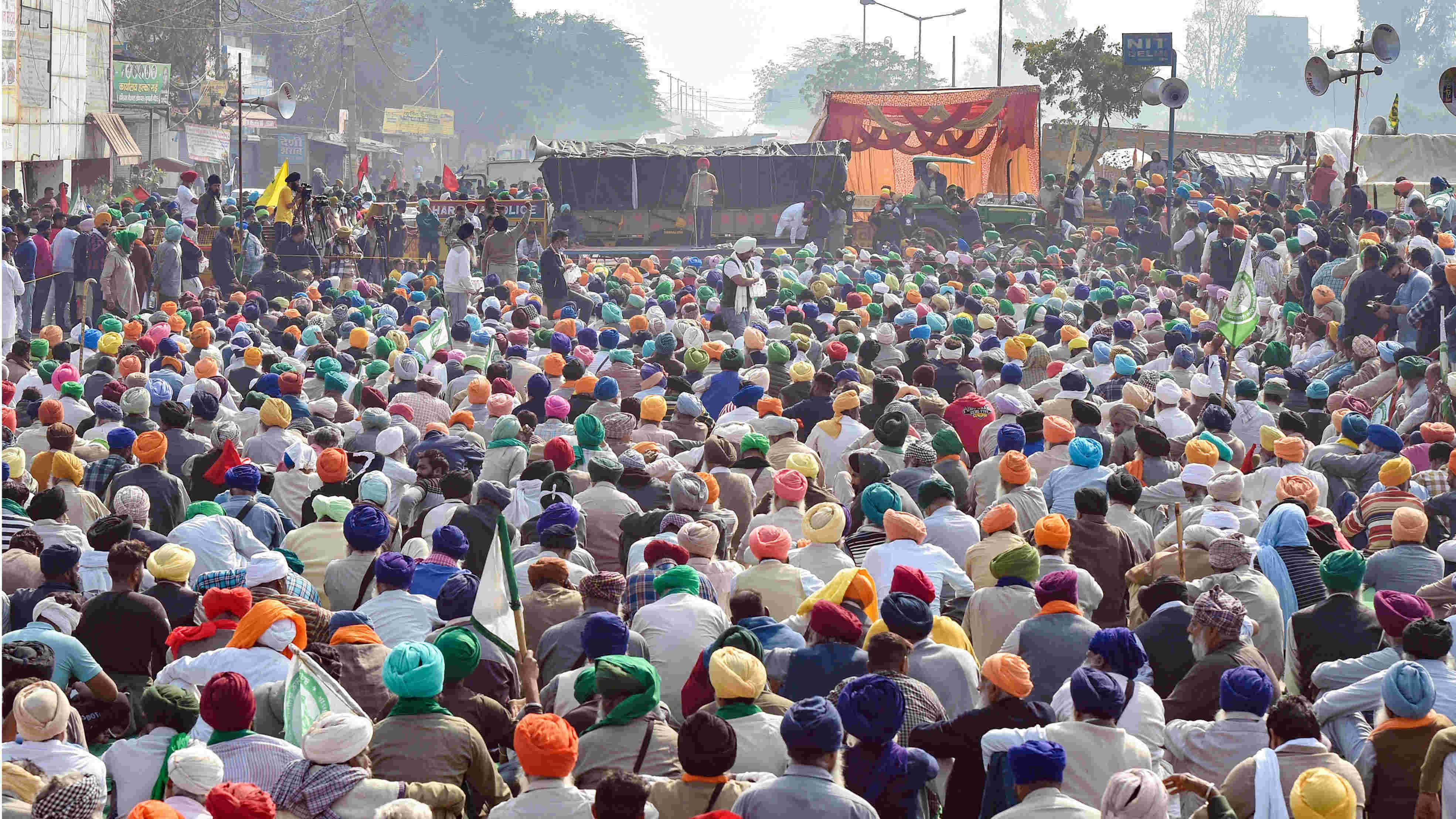
Lessons from Singhu border- farmers’ movement is now entering a new phase
If farmers can gain support as annadaatas, there's no reason why a larger solidarity can't be built for Muslims with a narrative willing to engage the common Hindu

The protest leadership is also transitioning. After being led by Jats and Sikhs, panchayats at various places in Punjab and Haryana are reaching out to Dalits to join the protests. Punjab has the largest Dalit population in India. Panchayats and khaps, in order to include Dalits, are discussing caste-based discrimination. They are also deliberating on the issue of prejudice against Muslims and introspecting where they went wrong by supporting the Bharatiya Janata Party and by consenting to the communal violence in Muzaffarnagar. Farmers invited Muslim leaders to address the protests and there was a kind of performance that was akin to ‘truth and reconciliation’. These are explosive changes in the otherwise conservative rural hinterlands that are combining the intricate cultural issues ‘internal’ to the rural community with the ‘external’ economic assault on the sovereignty of the agrarian economy. Farmers have perceived the complex inter-relationship between the need to bring about internal social change and to defend themselves against an external assault. In fact, the second phase of the farmers’ protest is no longer about the kisan but about insaan.
There is also the possibility of a second phase of the anti-CAA protests after the pandemic subsides, given that the Union home minister has referred to the formulation of the rules and its implementation after the current round of assembly elections. The anti-CAA protests must observe the developments and changes brought about by the farm protests to understand how the moral universe is built in order to reach out to a larger number of social groups cutting across cultural differences. It is in building solidarities, and not in making appeals to the State and invoking the Constitution, that resistance can meet with success.
The anti-CAA protests, too, began by making the right moves. It was led by women. There were declarations that this was to be a protest to save democracy and the Constitution. It began to spread beyond Shaheen Bagh to other cities and smaller towns in North India. However, the anti-CAA protest, unlike the farmers’ movement, seems to have reduced itself to an agitation by and for Muslims. Further, it got stuck in its agenda with its appeal to repeal the Citizenship (Amendment) Act.
The second phase of the anti-CAA mobilization, if it is to be started after the pandemic, needs to move into more universal registers and focus on appealing to the larger sections of the Hindu population that remain indifferent. A CSDS survey revealed that a majority of the respondents from Hindu society support the CAA. Herein lies the confidence of the current regime in pushing for these changes.
The question that the anti-CAA protesters must address is the need to create the kind of moral valency that the farm protest has generated. They need to ask themselves what kind of symbolic representation would allow them to gain the support of the larger society beyond the Muslim community. Significantly, the CSDS survey had also found that most Hindu respondents supported a plural India — not a theocratic Hindu rashtra. But when it came to the CAA, they responded differently. This only shows that the social imaginary and the moral signification of being a Muslim ought to be resignified. The anti-CAA movement needs to address the points on which majoritarian mobilization is based.
In an interview in The Caravan, a rioter who took part in the Delhi riots said that he regrets taking part in the violence but ‘Muslims cannot be trusted and they will consolidate and organize attacks on Hindus and we need to be vigilant.’ This intangible anxiety is driving the consent for the violence against and the marginalization of Muslims. It is this inexplicable anxiety of a majority community against a numerical minority that is making compassion towards Muslims difficult. No amount of violence seems to convince the majority that a Muslim can be a victim of unfair violence. Muslim mobilization in India, as part of the anti-CAA protest or otherwise, has to create narratives to quell this anxiety that is not based on evidence. If farmers can gain support as annadaatas, there is no reason why a larger solidarity cannot be built for Muslims with a narrative that is willing to engage the common Hindu and not just the State.


0 Response to " Lessons from Singhu border- farmers’ movement is now entering a new phase"
Post a Comment
Disclaimer Note:
The views expressed in the articles published here are solely those of the author and do not necessarily reflect the official policy, position, or perspective of Kalimpong News or KalimNews. Kalimpong News and KalimNews disclaim all liability for the published or posted articles, news, and information and assume no responsibility for the accuracy or validity of the content.
Kalimpong News is a non-profit online news platform managed by KalimNews and operated under the Kalimpong Press Club.
Comment Policy:
We encourage respectful and constructive discussions. Please ensure decency while commenting and register with your email ID to participate.
Note: only a member of this blog may post a comment.